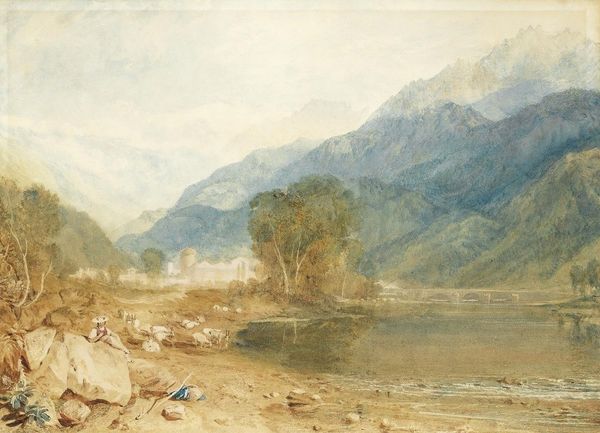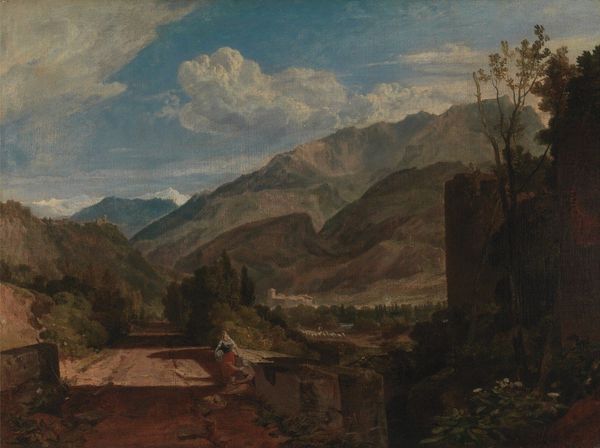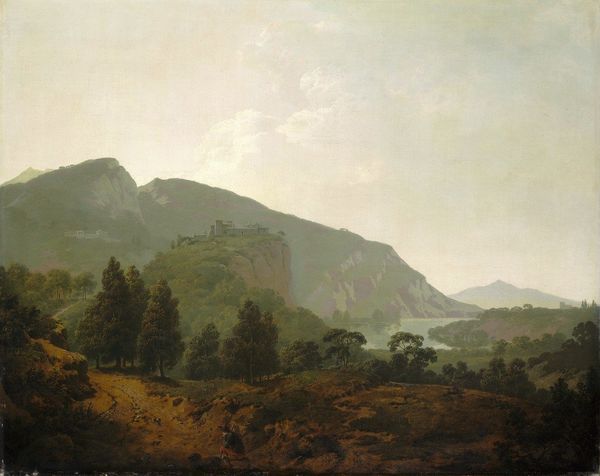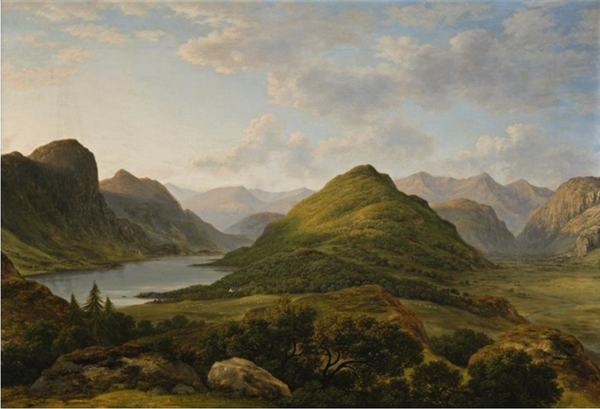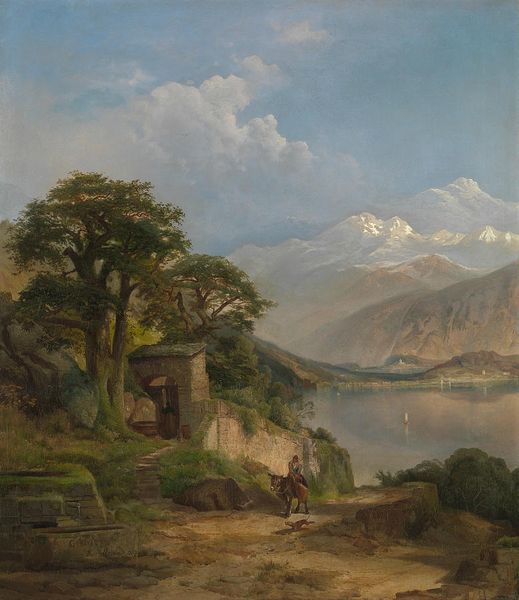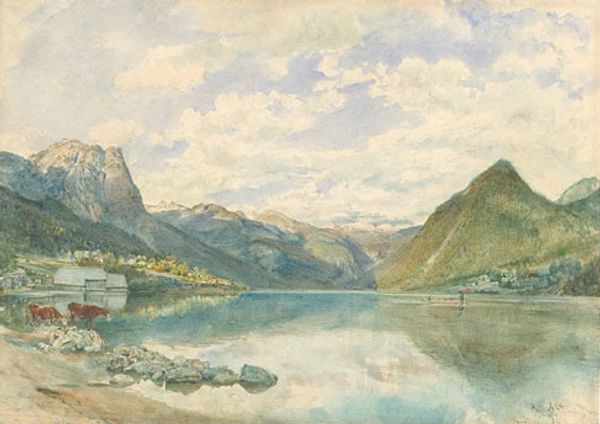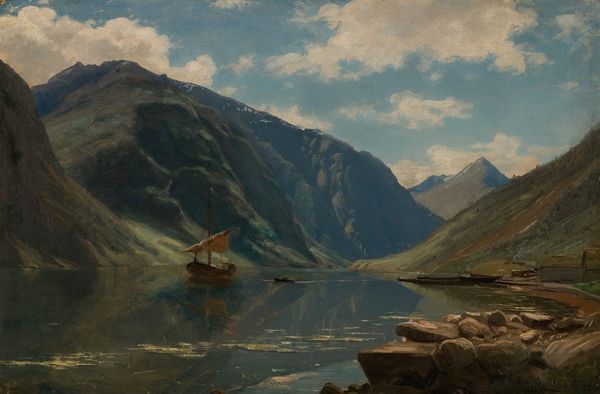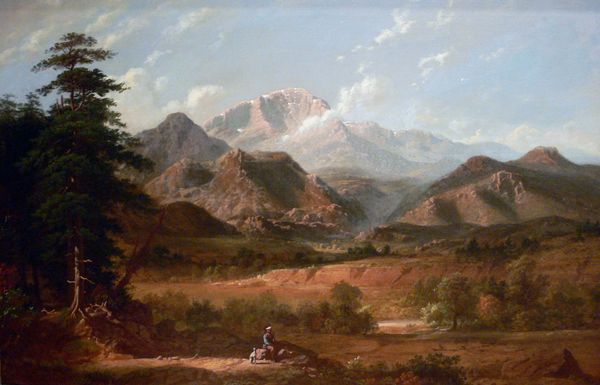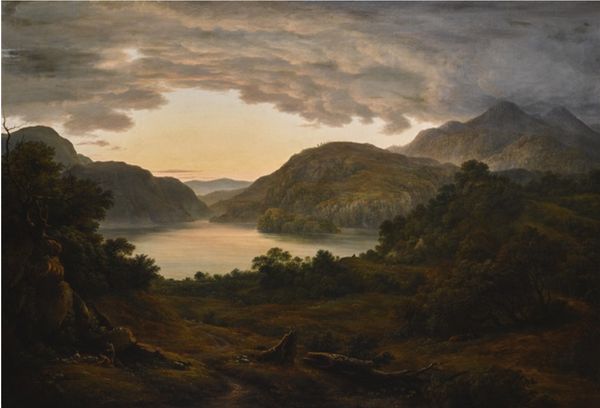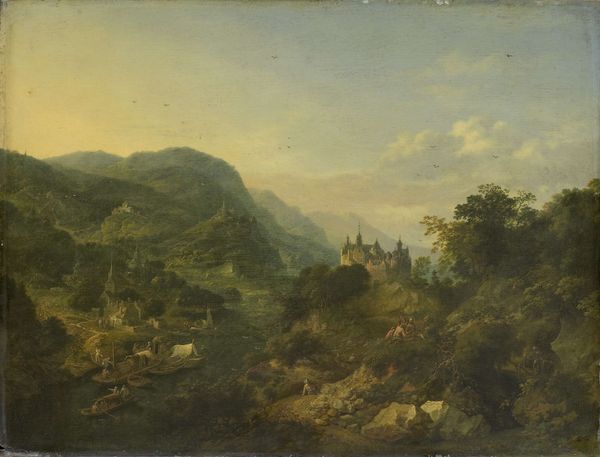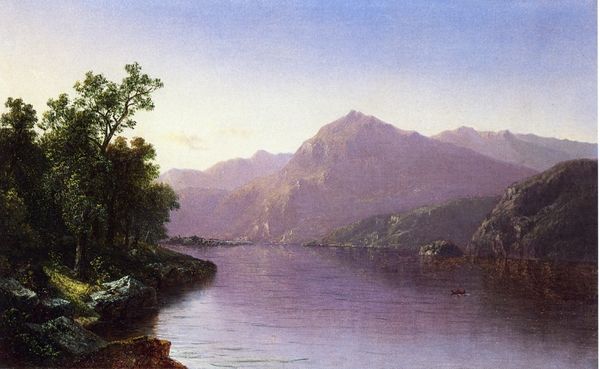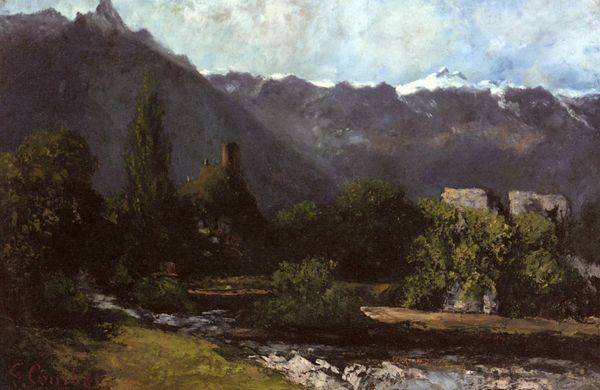
painting, oil-paint
#
painting
#
oil-paint
#
landscape
#
oil painting
#
romanticism
#
realism
Copyright: Public Domain: Artvee
Editor: Here we have Turner's "Bonneville, Savoy," painted in 1803 using oil paints. It gives such a sense of grand scale and serenity; how should we approach this artwork? Curator: Think about the time in which Turner painted this; the echoes of revolution and empire building across Europe. How does a scene like this – seemingly untouched, serene – speak to or perhaps even against that backdrop of upheaval? Editor: So, you're suggesting that the peaceful appearance of the landscape is a counterpoint to the period’s turmoil? Curator: Exactly! Consider the Romantic movement's focus on nature as sublime, something beyond human control. Does this depiction offer a form of escapism, or perhaps a subtle commentary on the fleeting nature of human power against the enduring presence of the natural world? How are the human figures placed in the scene, and what might they represent in the face of this vast landscape? Editor: They seem so small and almost blended into the foreground, suggesting a definite contrast of scales. It almost reads as vulnerable rather than powerful. Curator: Yes! And note how the landscape isn't just 'there'—it's actively composed. Turner isn't simply recording a view, but building an argument about humanity’s place within a larger framework. How might this relate to discussions around class and the social hierarchy present at the time? Editor: I never would have thought of landscape painting in such a deeply social way. Now it offers many insights into how people related to the world around them. Curator: Indeed, viewing art in context is vital; it enables us to engage critically and personally. Editor: Absolutely. I'll be sure to keep that in mind moving forward.
Comments
No comments
Be the first to comment and join the conversation on the ultimate creative platform.

